Kompostoi tehokkaasti – kutsu Bokashi kylään (scroll down for English version)
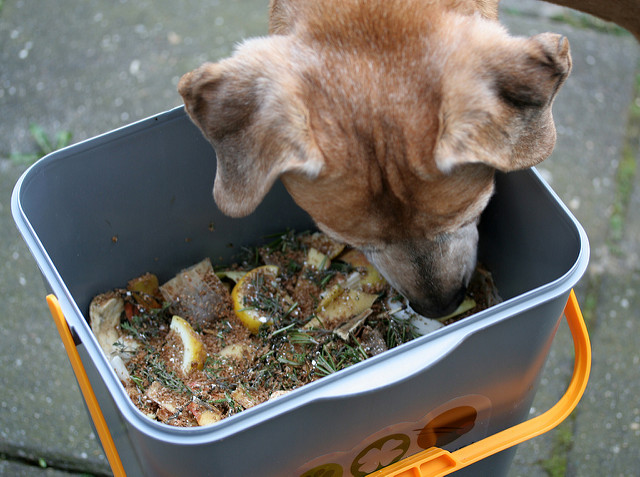
Pienempi hiilijalanjälki? Vähemmän jätettä? Hajutonta kompostointia sisätiloissa nopeammin kuin arvasitkaan? Ravinteet kasveille omasta takaa ja vanhat kukkamullat hyötykäyttöön. Tätä kaikkea on Bokashi, joka muutti taloomme vuosi sitten.
Bokashi on Japanista lähtöisin oleva kompostointitapa, jossa boka shi -sanapari tarkoittaa käynyttä eloperäistä ainetta.
Keittiöjätteet hajoavat maitohappokäymisen seurauksena nopeasti ja hajuttomasti. Biojätteet voidaan kompostoida omassa astiassaan vaikka keittiön tai kylpyhuoneen nurkassa. Bokashi hyödyntää maitohappobakteereita, hiiva- ja entsyymisieniä ja monia muita pieneliöitä. Niistä käytetään EM-lyhennettä (effective micro-organism). (Lähde: https://www.bokashigarden.fi/bokashin-abc)
Tuumasta toimeen
Aloittaaksesi tarvitset ensinnäkin Bokashi-ämpärin (huom., tunnetaan myös mm. nimíllä Bämpäri ja Bokahontas :)), tai mieluummin kaksi. Näppärimmät askartelevat ämpärit tietysti itse, mutta valmiinakin niitä on tarjolla. Kahden kannellisen sekä hanallisen ämpärin aloituspakkauksia tarvikkeineen saa nykyisin Turustakin.
Edellisten lisäksi tarvitset bokashirouhetta, sekä pienen, n. 1-2 l:n vetoisen kannellisen astian päivittäisen biojätteen keräämiseen. Biomassan tiivistämiseen tarvitaan lasta tai vastaava. Aloituspakkauksessa sellainenkin on mukana.
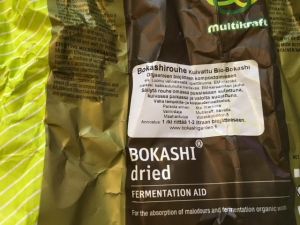
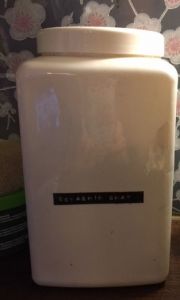
Onnistuneen prosessin edellytys on mahdollisimman ilmatiivis tila, joten ämpäriä avataan maksimissaan kerran vuorokaudessa. Päivän mittaan kertyneet biot kipataan Bämpäriin ja sekaan ripotellaan rouhetta. 1 rkl per litra biojätettä on hyvä nyrkkisääntö, kun puhutaan pääosin kasviperäisestä jätteestä. Proteiinipitoiseen jätteeseen lisätään rouhetta enemmän. Rouhe käännellään jätteen sekaan ja lopuksi se tiivistetään. Kun ämpäri on suljettu, sihautetaan sieltä vielä kannen kautta ilmat pois mahdollisimman tarkkaan.
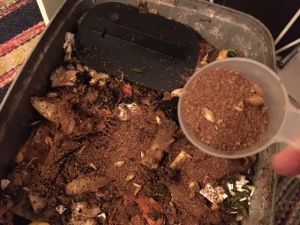
Sen lisäksi, että massan pitää olla ilmattomassa tilassa, on tärkeää, ettei massa ole märkää. Muuten prosessi muuttuu hapattamisesta mädättämiseksi. Niinpä bämpäristä tulee poistaa kertynyt suotoneste. Bämpäri tulee siis pissittää muutaman päivän välein.
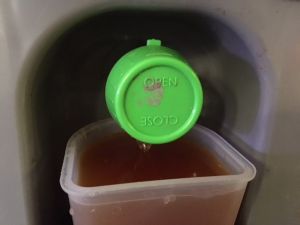
Näin saatu neste on erittäin ravinteikasta ja sitä voi käyttää vahvasti laimennettuna mm. kasvien lannoittamiseen.
Biojätteestä takaisin mullaksi
Nopeudessaan Bokashi on vaikkapa lämpökompostointiin verrattuna lyömätön. Porkkanan naatin matka mullaksi taittuu nopeimmillaan reilussa kuukaudessa. Kun bämpäri on piripintaan täynnä biojätettä, siirretään se jatkohapattumaan samalla kun vaihdetaan täytettäväksi uusi bämpäri. Vähintään kahden viikon jatkohapattamisen jälkeen biojätemassa sekoitetaan käytetyn mullan kanssa. Sekoitus peitetään lopuksi muutaman kymmenen sentin multakerroksella, jotta kosteus pysyy optimaalisena ja hajut siellä missä pitääkin. Ollaan multatehdas-vaiheessa.
Multatehtaan voi kesäaikaan perustaa pihamaalle, esimerkiksi lavankaulus tai muovinen laastisaavi toimivat tässä hyvin. Nyt talviaikaan omat multatehtaani toimivat saunan lauteiden alla lattialla. Edellisistä vaiheista poiketen multatehdas tarvitsee toimiakseen ilmaa. Älä siis käytä kansia tms., vaan suojaa tehdas tarvittaessa esim. verkolla.
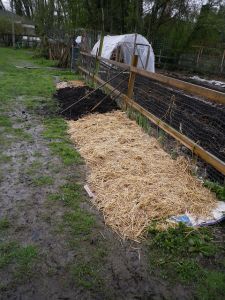
Muutaman viikon multatehdas-vaiheen jälkeen voi kurkistaa tehtaaseensa varovasti. Jos näkyvillä on vielä jätteen palasia, voi niitä hieman murentaa ja sekoittaa massaa prosessin nopeuttamiseksi. Muutaman päivän kuluttua voi nauttia työnsä tuloksista ja hypistellä itse valmistamaansa multaa.
Bokashimulta on erittäin ravinteikasta ja sopii mainiosti vaikkapa savimaan parannukseen. Oman pihan puuttuessa itse loihtimansa mullan voi käyttää sisä- ja parvekekasvien iloksi.
Näin kevään kynnyksellä on mitä mainioin hetki pienentää omaa hiilijalanjälkeään. Ainakin allekirjoittaneella perheineen syntyy jätettä aivan merkittävästi aiempaa vähemmän, kun suuri osa päivittäin kertyvästä jätteestämme päätyy jatkojalostuksen kautta takaisin kasveillemme. Myös rahallinen säästö on ainakin pihan omaavilla merkittävä. Uutta multaa ei tarvitse raahata tontille, kun vanhan, käytetyn mullan voi elävöittää uuteen kukoistukseen uudestaan ja uudestaan. Melko mainiota, vai mitä?
Lisää tietoa saat esimerkiksi liittymällä Facebookissa Bokashi Suomi-ryhmään.
Kattavat tiedot aloitukseen löydät myös https://www.bokashigarden.fi/bokashin-abc
Kuvat: Kirsi-Maria Castrén Harju ja Flickr
Compost efficiently – invite Bokashi to help you
Smaller carbon footpring? Less waste? Odourless composting indoors faster than you guessed? Nutrients for plants without buying any from shops, and the opportunity to utilize old garden soil. All this is possible now, thanks to Bokashi that moved in with us a year ago.
Bokashi is a composting method originating from Japan, with the words boka shi referring to fermented organic matter.
As a result of fermenting in a lactobacillus culture, kitchen waste decomposes quickly and odourlessly. Organic waste can be composted in a separate bucket located, for example, in the corner of the kitchen or bathroom. Bokashi composting utilizes lactobacillus bacteria, yeast and fungi, and many other micro-organisms. These are referred to with the abbreviation EM (effective micro-organism). (Source: https://www.bokashigarden.fi/bokashin-abc)
Rolling up your sleeves
To be able to start, you’ll need a Bokashi bucket, or preferably two. If you’re clever with your hands, you can make your own, but ready-made buckets are also available. Starter kits that include two buckets with lids and taps and the necessary material are even sold in Turku these days.
In addition to the above-mentioned items, you’ll need Bokashi bran and a small container of 1–2 litres with a lid for collecting the daily organic waste. A trowel or corresponding is needed for pressing the material down. Starter kits include one.
The prerequisite for a successful process is as airtight a space as possible. Therefore, the bucket is opened once a day, at the maximum. The organic waste gathered during the day is poured in the bucket and some bran is mixed among the waste. 1 tablespoon per 1 litre of organic waste is a good rule of thumb, when talking about mostly vegetable waste. If the waste contains lots of protein leftovers, you should use more bran. The bran is mixed in the waste by turning it gently, and at the end, the material is pressed. When the bucket has been closed, extra air must be let out through the lid as carefully as possible.
In addition to the space being airtight, it is important that the organic mass is not wet. Otherwise the process turns from fermentation into putrefaction. That’s why all liquid seepage must be removed from the bucket. You can do that every few days. Don’t throw the liquid away. It’s extremely nutritious, and you can use a strongly diluted version to fertilize plants, for example.
From organic waste back to earth
Bokashi composting is a quick method. Comparing with, for instance, hot composting, Bokashi wins in speed. The carrot tops’ journey from green to earth takes, at best, just over a month. When the bucket is full to the brim, move it aside for further fermentation and start filling a new bucket. After at least two weeks of fermentation, mix the fermented organic waste with used soil. Cover the mix with approximately 30–40 cm layer of soil to maintain an optimal moisture level and keep any odours where they belong. Now we’re at the soil factory phase.
In the summertime, you can set up your soil factory outside. Frame sides or a plastic mortar tub work well for this purpose. During winter, my own soil factory operates under the sauna benches, on the floor. Unlike the previous stages, the soil factory needs air. So don’t use lids, instead when necessary, protect the factory with for instance net.
After a few weeks of the soil factory stage, you can carefully peep into your factory. If you can spot pieces of waste, you can crush them a little and stir the material to speed up the process. After a few days, you can enjoy the results of your work and feel your home-made earth in your fingers.
Bokashi soil is very nutritious and suits well to, for example, improving clay soil. If you don’t have your own garden, you can just as well use your DYI soil with indoor plants or balcony gardening.
At the threshold of spring, it’s the right moment to reduce the size of your carbon footprint. At least the household of the author of this text creates a significantly smaller amount of waste now that a great part of our daily waste ends up being further processed into new earth. Bokashi composting also saves money, quite significantly at least for those who own a garden. You don’t need to drag new soil from stores when you can revive the used earth to be re-used again and again. Sounds fantastic, right?J
Find out more about Bokashi composting https://www.the-compost-gardener.com/bokashicomposting.html
or by joining the group in Facebook https://www.facebook.com/groups/827830627253608/ (in Finnish)
or an English group https://www.facebook.com/groups/655241114508581/about/
Pictures: Kirsi-Maria Castrén Harju and Flickr
